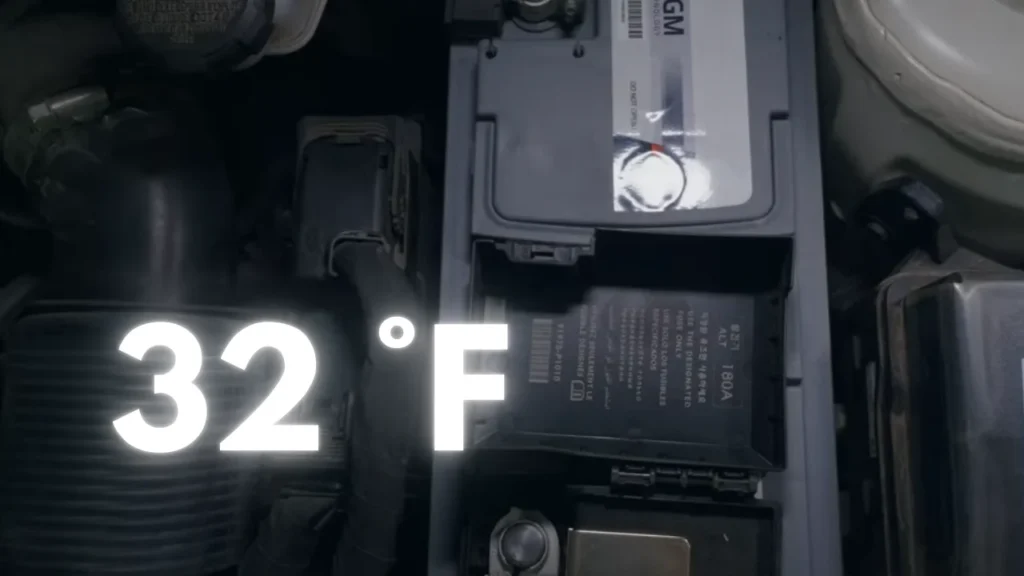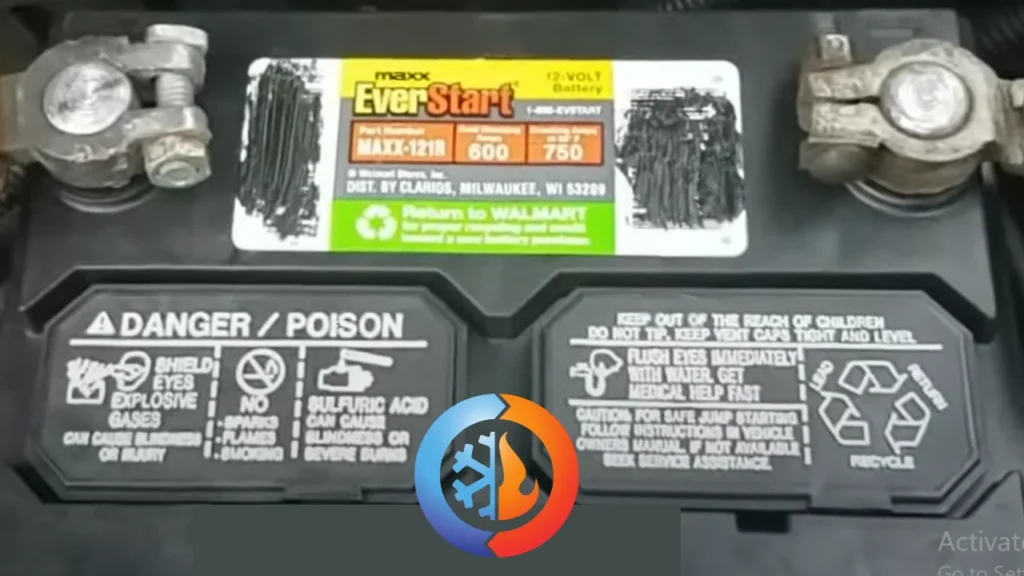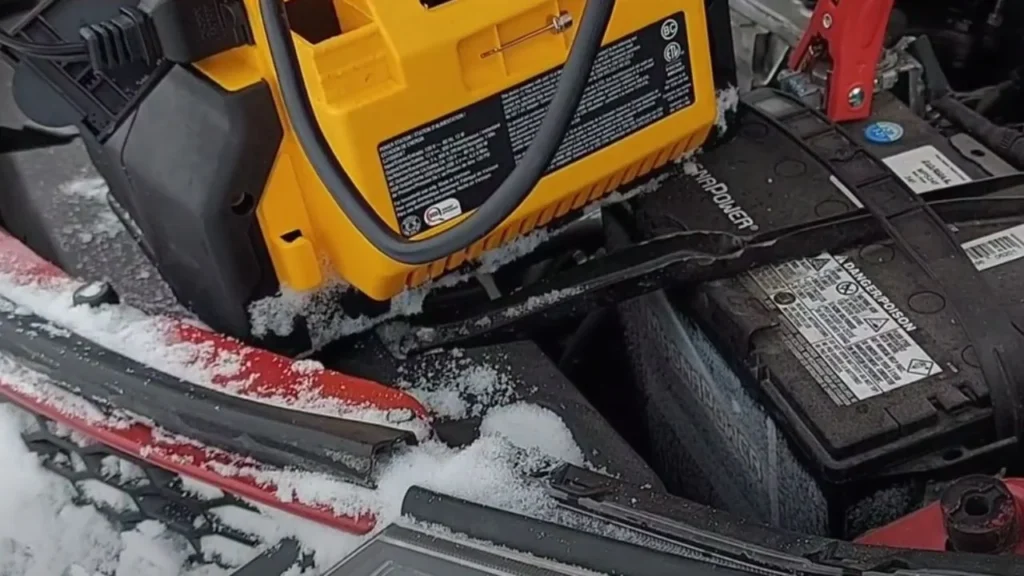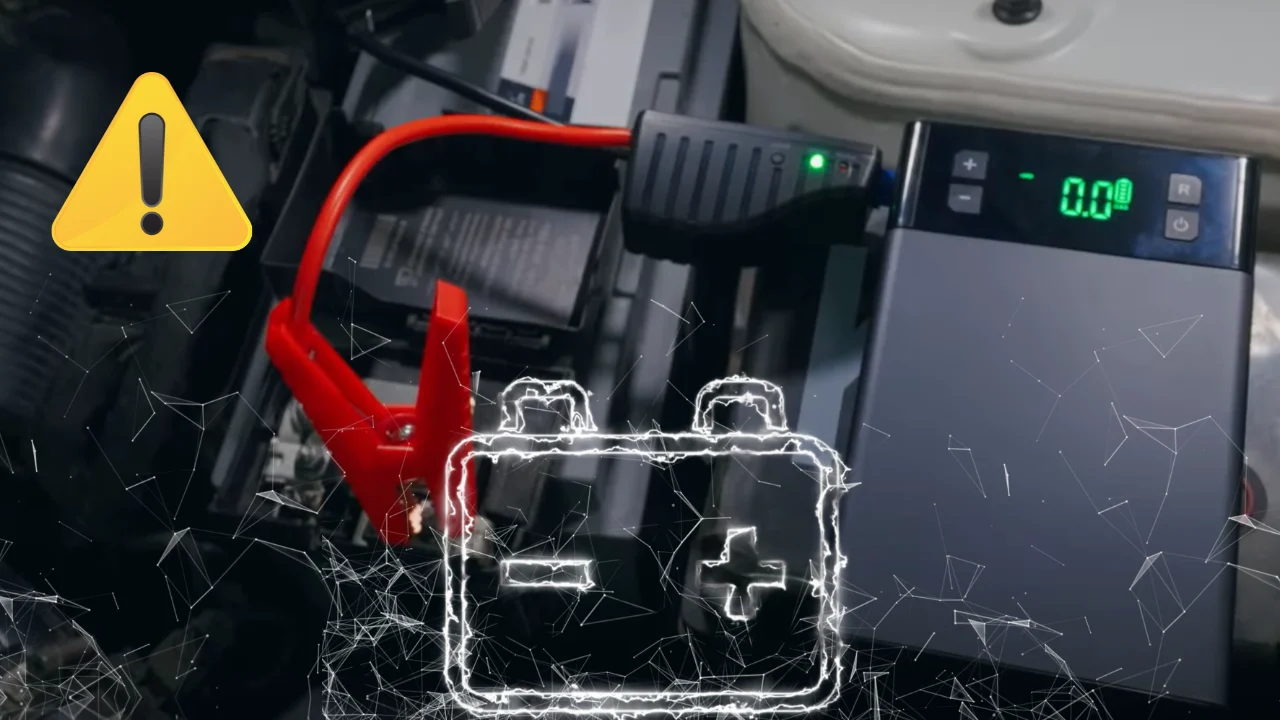What happens if you jump start a frozen battery? This is a crucial question for drivers during the winter months. Car batteries are primarily composed of about 65% water, which can freeze when temperatures drop below 32°F (0°C). Need to know how to charge your portable jump starter properly? Read our article on charging a portable jump starter for step-by-step instructions.
Jump-starting a frozen battery is dangerous due to the potential for gas expansion and explosions. The internal pressure can rise rapidly, with studies indicating a 60% higher risk of explosion under these conditions. To ensure safety, it’s best to thaw the battery before attempting to start your vehicle, thus avoiding serious damage and costly repairs.
Quick Look:
Jumping a frozen battery can be extremely dangerous and may result in explosions due to gas expansion. Car batteries are about 65% water, which can freeze when temperatures drop below 32°F (0°C), especially if not fully charged. To avoid serious damage and costly repairs during winter, it’s crucial to thaw the battery before attempting to start your vehicle.
If you’re unfamiliar with using jumper cables, check out our guide on how to jumpstart a starter with jumper cables to ensure you’re doing it safely.
How Car Batteries Freeze
Let’s break it down—your car battery is mostly water, about 65%, mixed with 35% sulfuric acid. When the temperature drops, especially below 32°F (0°C), the water component starts freezing if your battery isn’t fully charged. Did you know a fully charged battery can handle temps as low as -76°F (-60°C)? That’s some serious cold tolerance!

But here’s the thing: as the charge in the battery drops, it becomes more vulnerable to freezing. A weak battery won’t survive the cold, and once frozen, the expansion of ice inside the battery pushes against the internal plates. That’s why you might hear people talking about how their car battery just “died” overnight.
Looking for the best-rated portable jump starters? Find the best options in our review of the best-rated portable jump starters.
What happens if you jump start a frozen battery?

Jump-starting a frozen battery isn’t just a bad idea—it’s downright dangerous. When a frozen battery is forced to charge, the hydrogen gas inside expands rapidly. Imagine gas trapped inside ice—it has nowhere to go, leading to a 60% higher risk of explosion. You don’t want battery acid flying everywhere, right?
Increased Explosion Risk
Charging a frozen battery can create excessive pressure due to gas expansion, potentially leading to an explosion in 1 in 5 cases. This is a serious concern for anyone attempting to jump-start a vehicle in cold conditions.
Potential Damage to Electronics
It can damage the delicate electronics in your car, leading to costly repairs—sometimes up to $1,000. In fact, nearly 30% of car owners have reported costly electronic repairs due to improper jump-starting. This financial hit can be easily avoided with proper precautions.
When we ask, “what happens if you jump start a frozen battery,” the answer isn’t pleasant. The battery could explode, spewing harmful chemicals and even damaging your vehicle’s internal systems.
Chemical Hazards
An explosion can release up to 5 gallons of sulfuric acid, posing serious health risks. This not only endangers the individual attempting the jump but can also cause environmental hazards if the acid leaks.
Costly Repairs
Internal damage could lead to costly repairs, with estimates suggesting that 15% of battery-related failures could have been prevented with proper care. Preventative maintenance is crucial to avoid these situations.
Step-by-Step Guide: Jump Start a Frozen Battery

When you discover a frozen battery, it’s crucial to handle the situation with care. Jump-starting a frozen battery can lead to dangerous consequences, including explosions and damage to your vehicle. Instead, follow these steps to safely assess and revive your battery without risking harm.
Inspect the Battery
When I find myself facing a frozen battery, the first thing I do is inspect it closely. If I notice any bulging or cracks, it’s a sign that the battery is damaged and needs to be replaced immediately. Statistics show that nearly 20% of batteries fail in cold weather, making inspection crucial.

Thaw the Battery Safely
After checking, I move the battery to a warmer place if it’s safe to do so. Allowing the battery to thaw naturally is key; I usually let it sit in a temperature of at least 40°F (4°C) for a few hours. This simple step can significantly reduce the risk of potential explosions.
Test the Charge
Next, I grab my trusty voltmeter to check the battery’s charge after it has thawed. If the voltage is below 12.4 volts, it’s typically too low to start the car effectively. Understanding how to test the battery properly is essential because a frozen battery can sometimes recover with the right care.
Prepare for Jump-Starting
If the battery appears fine and holds a decent charge, I consider jump-starting it—carefully! I make sure to connect the jumper cables correctly, always remembering to attach the positive clamp first. Trust me, getting the connection right is vital to avoid further complications.

Monitor During the Process
Finally, I keep an eye on the battery during the process. If I notice any unusual sounds or smells, I immediately disconnect and step back. In my experience, knowing what happens if you jump start a frozen battery can save you from unnecessary hazards.
If you drive a diesel truck and need a jump starter, discover the top picks in our article on the best jump starters for diesel trucks.
Preventing a Frozen Battery
As winter approaches, it’s essential to take proactive steps to protect your car battery from freezing. By implementing a few simple strategies, you can significantly reduce the risk of a frozen battery. Let’s explore some effective ways to keep your battery warm and functional during the cold months.
Park in Warm Locations
When I think about preventing a frozen battery, the first tip that comes to mind is to park in warm locations. If you can keep your car in a garage or a shed, it can be a game-changer during winter months. Studies show that parking in a heated area can lower the chances of battery freezing by up to 50%.
Maintain a Full Charge
I also learned that maintaining a full charge is vital. Regularly driving your car or using a trickle charger can help keep the battery charged and warm. A fully charged battery has a lower freezing point, making it less susceptible to cold weather issues.
Use Thermal Battery Blankets
Using equipment like thermal battery blankets can further shield your battery from frigid temperatures. These blankets help maintain battery warmth, reducing freezing risk. In fact, using a blanket can increase your battery’s lifespan by approximately 30%.
Monitor Battery Health
Lastly, it’s important to keep an eye on battery health throughout the year. A routine check can help catch any issues before winter hits. Remember, prevention is key—so think about what happens if you jump start a frozen battery and take steps to avoid it altogether!
Jump-starting a specific vehicle like a Mini Cooper can require special attention. Learn the correct process in our guide on how to jump-start a Mini Cooper.
Safety Guide for Jump-Starting a Frozen Battery
As winter approaches, it’s crucial to prioritize safety when dealing with car batteries, especially in freezing temperatures. Understanding the risks associated with jump-starting a frozen battery can prevent dangerous situations and costly repairs. This guide outlines essential safety measures to follow, ensuring you keep your vehicle running smoothly during the cold months.
Understanding the Risks
- Jump-starting a frozen battery poses serious dangers, including the risk of explosions due to gas expansion.
- Batteries consist of about 65% water, making them susceptible to freezing when not fully charged.
- A frozen battery has a significantly higher chance (up to 60%) of explosion when attempting to charge it.
Thawing Before Starting
- Always allow a frozen battery to thaw naturally before attempting to jump-start it.
- Inspect the battery for any damage, such as bulging or cracks; a damaged battery should not be jump-started.
Proper Jump-Starting Techniques
- Use high-quality jumper cables and ensure proper connections, attaching the positive clamp first.
- Monitor the battery for unusual sounds or smells during the jump-starting process.
Preventative Measures
- Park in a garage or heated space to reduce the likelihood of battery freezing, potentially decreasing risks by up to 50%.
- Regularly maintain a full battery charge to minimize the risk of freezing.
- Consider using thermal battery blankets, which can help keep the battery warm and potentially extend its lifespan by about 30%.
Do’s and Don’ts for Jump-Starting a Frozen Battery
Do’s
- Thaw the battery first.
- Inspect for damage.
- Use quality jumper cables.
- Connect positive clamp first.
- Monitor during the process.
Don’ts
- Jump-start a frozen battery.
- Ignore bulging or cracks.
- Park in extreme cold.
- Leave accessories turned on.
- Rush the connection process.
Wrap-Up:
jumping a frozen battery can lead to dangerous situations, including explosions from gas expansion. If you’re wondering what happens if you jump start a frozen battery, statistics reveal that around 30% of winter battery failures result from freezing conditions.
To avoid this, keep your battery charged and store your vehicle in a warmer place, as a fully charged battery can resist freezing better. Knowing how to recognize a frozen battery and taking preventive measures will keep you safe and your vehicle running smoothly during winter.
